The verdict: The 2017 Buick Encore still has unique styling and city-friendly packaging, but a milquetoast driving experience and uncomfortable seats left me feeling bothered.
Versus the competition: The Encore is neither nice enough to be considered a luxury SUV nor affordable enough to hang with cheaper competitors that offer many of the same features.
When it debuted as a 2013 model, the Encore was unique in both shape and stature. It was the only vehicle to offer the higher ride height of an SUV, but with a much smaller footprint. The Encore is only 168.4 inches long, shorter than a Honda Civic sedan by more than a foot. That makes the diminutive Encore suitable for cities and other environments where big vehicles simply don't fit in.
Being first had its benefits: The Encore is Buick's best-selling model, and its success compelled GM to offer a more budget-friendly version in 2015, the Chevrolet Trax. Fast-forward a few years, though, and the Encore is far from being the only small SUV on the market. Subcompact SUVs have proliferated, and now the Encore competes against other tiny utes such as the Honda HR-V and Fiat 500X. Compare the Encore with those vehicles and the Trax here.
The Encore is sold in six trim levels (base, Preferred, Sport Touring, Preferred II, Essence and Premium). Our test vehicle was a front-wheel-drive Premium model, which started at $31,390 (including destination charges) but piled on a few options to bump the final price up to $34,075 — a lofty figure that gave me pause.
2017 Changes
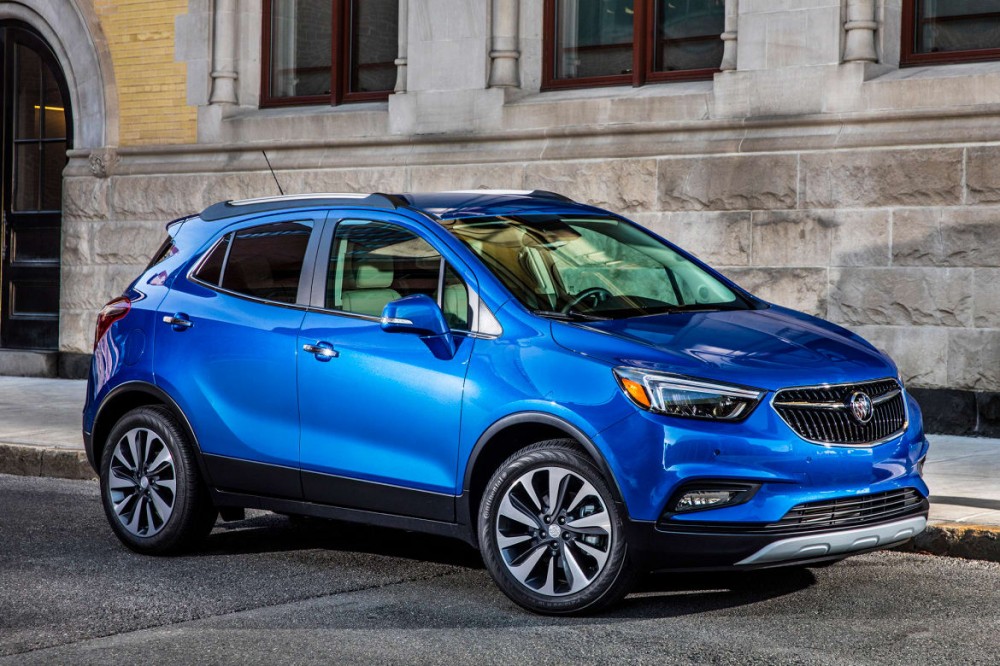
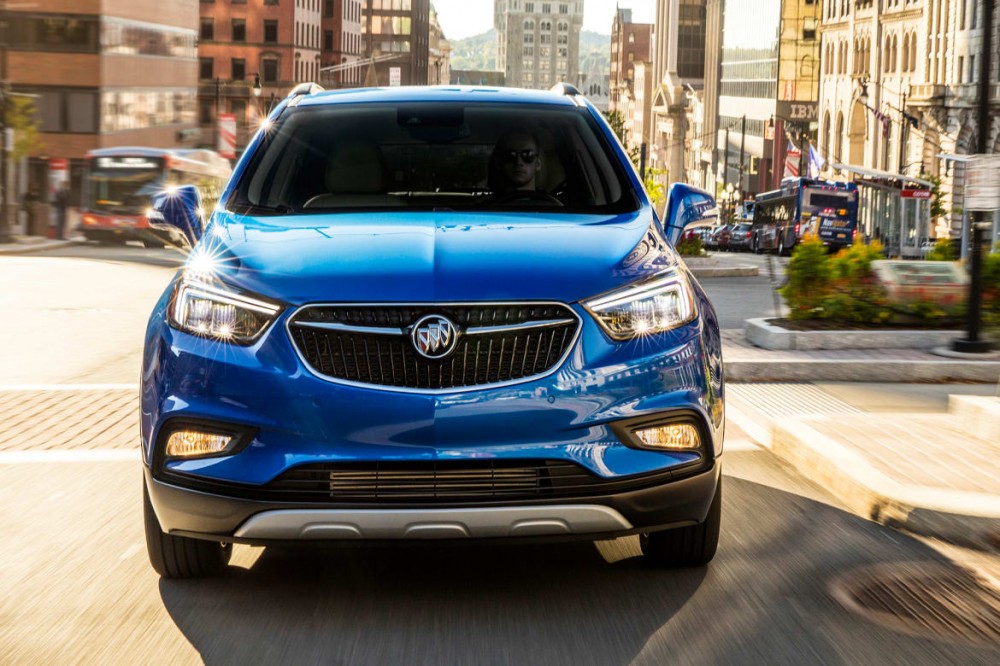
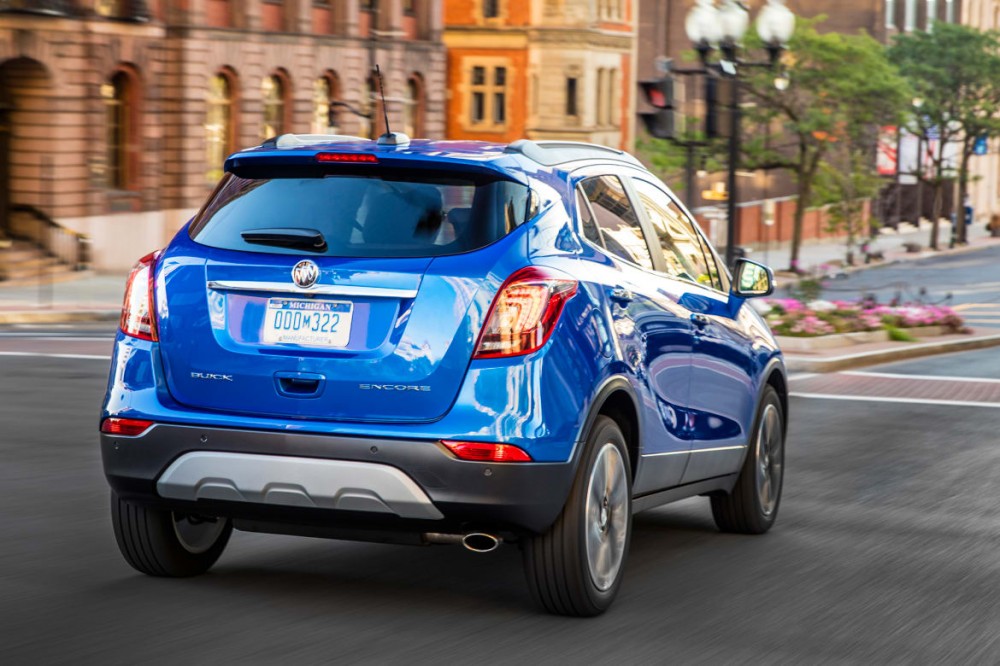
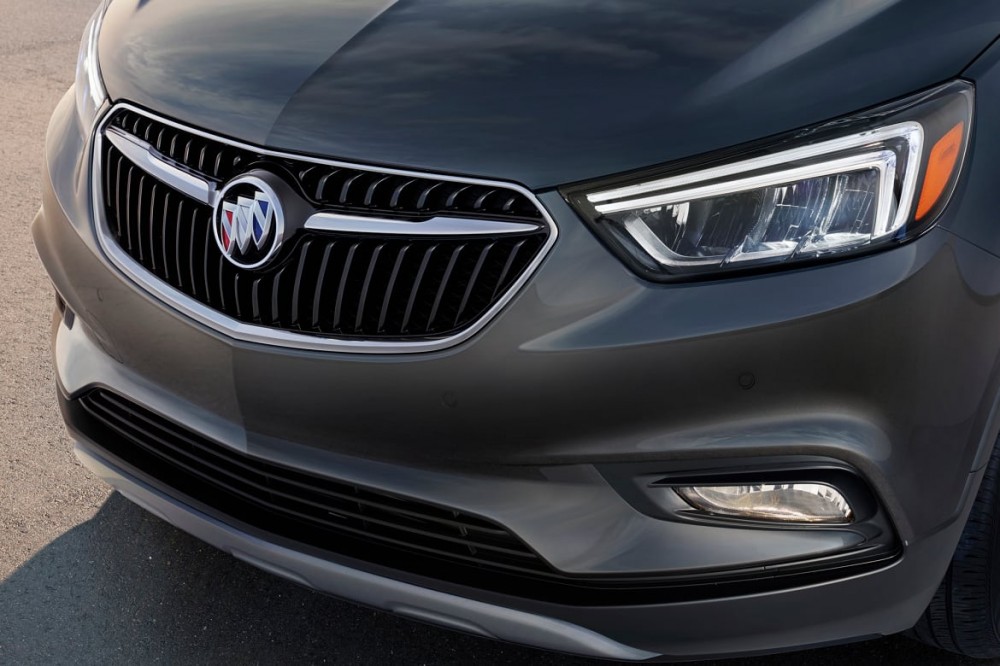
Mounting competition motivated Buick to update the Encore, and for 2017 it's received refreshed styling inside and out, as well as new in-cabin technology. Compare the 2017 Encore with last year's model here.
The exterior keeps the same high-walled proportions and adds a new grille, LED headlights on higher trim levels and new designs for the 18-inch alloy wheels (except on the Sport Touring). But the biggest change is one of omission: There are no more portholes atop the hood — Buick's signature design feature for many years (after decades without). The changes modernize the Encore's exterior, but it's still more noticeable for its shape than anything else.
Move inside, however, and the changes are less cosmetic and more substantive.
Interior and Technology
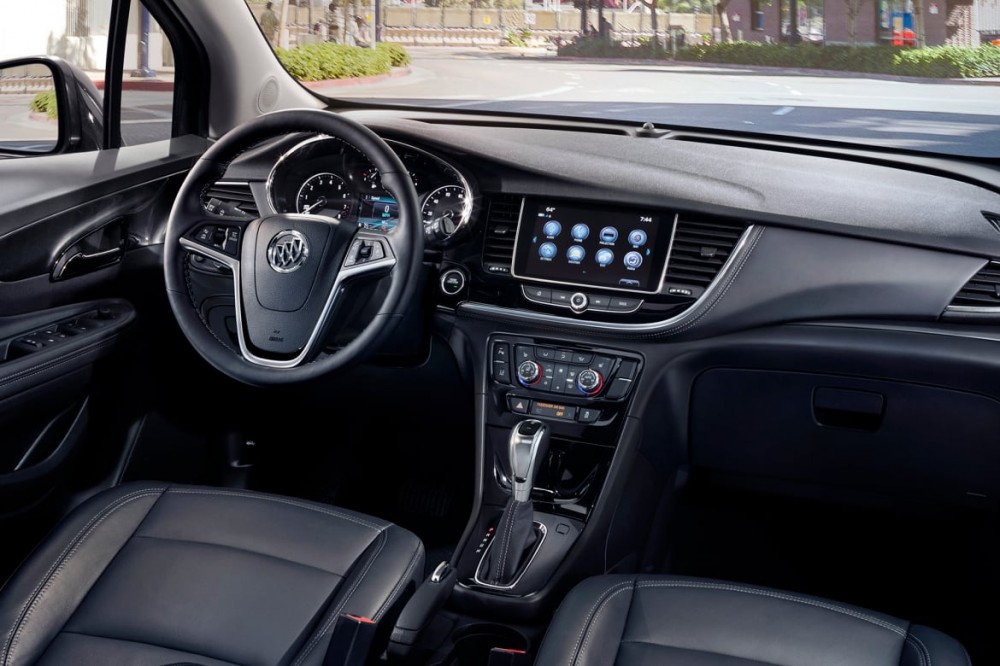
Inside, the dashboard has been face-lifted to make way for a newly standard 8-inch touchscreen and the latest version of Buick's Intellilink multimedia system. Not only is the screen larger, it's also better ergonomically because it's moved down and closer to occupants, making it easier to reach. Also added for 2017: Android Auto and Apple CarPlay, which are standard and a welcome addition.
This redesigned dashboard isn't without compromise, however; the second, upper glove box is gone, diminishing storage up front. And the interior updates haven't addressed some of the problems that keep the Encore from being a true luxury offering.
The screen has moved down and closer to occupants, making it easier to reach.
To start with, there's no large center console storage bin to serve as an armrest, and only the driver's seat has a swing-down inboard armrest. On short trips this doesn't really matter, but on longer jaunts the empty space is awkward and uncomfortable.
Additionally, what felt like a metal bar in the lower portion of the seatback caused discomfort, not only for myself but for front passengers as well. It didn't help matters that I took the Encore on a 700-mile trip up and down California — a lot of miles to feel like someone is prodding you in the lumbar region (albeit gently).
Sport Sort-of-Utility Vehicle
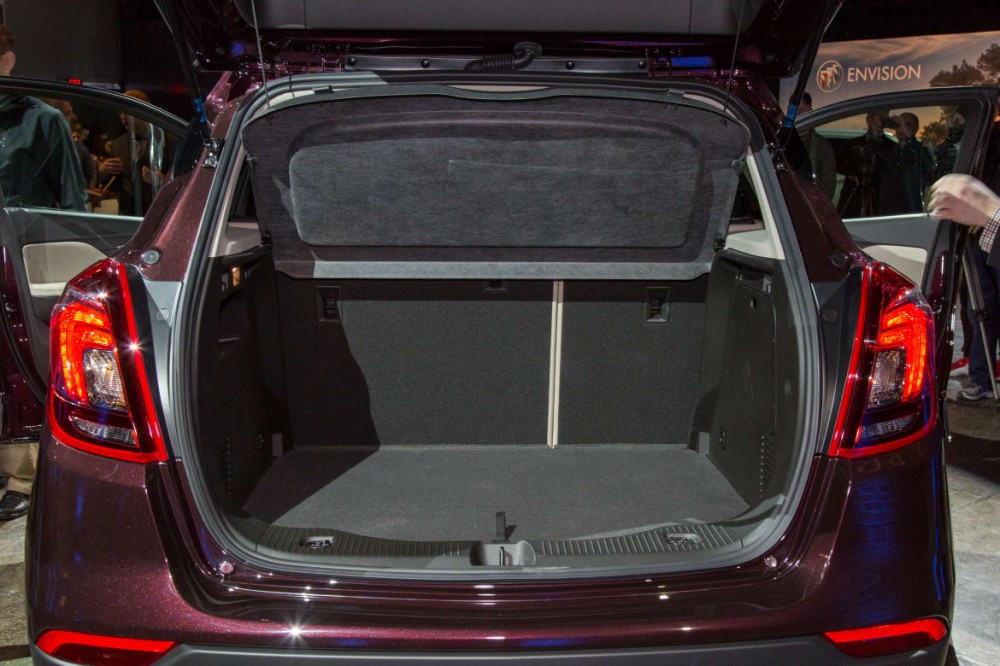
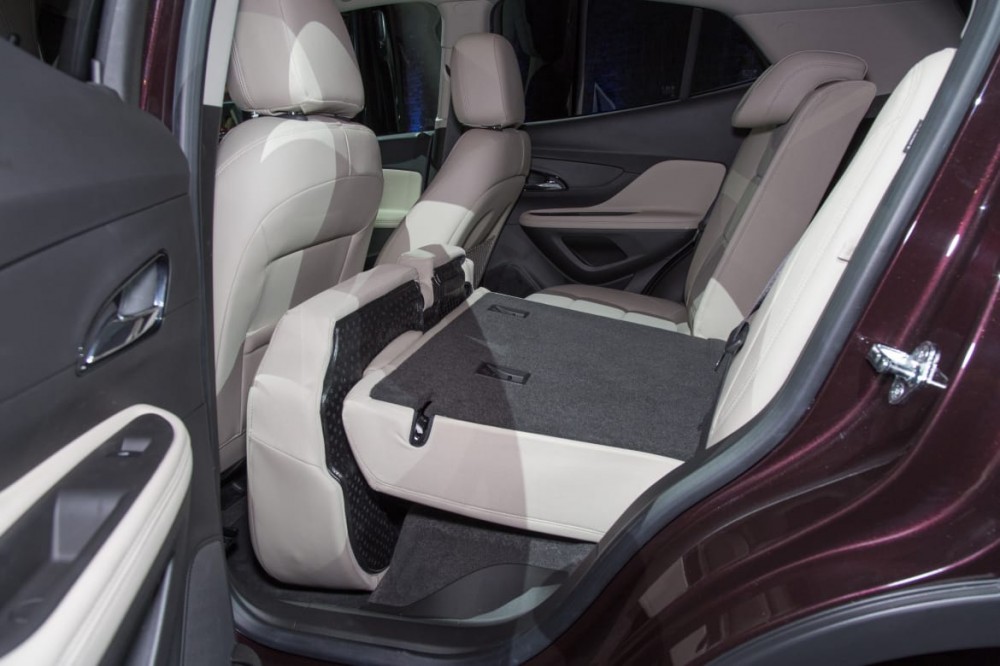
Because the Encore is such a small SUV, the "utility" part of the acronym is compromised. Cargo room behind the backseat is 18.8 cubic feet, expanding to 48.4 cubic feet with the backseat folded. Though 18.8 cubic feet isn't terribly far from what the competing Honda HR-V subcompact provides (24.3 cubic feet), the Encore's base price is closer to that of Honda's compact CR-V, which boasts more than twice as much cargo volume as the Encore, at 39.2 cubic feet.
Folding the rear seats is a two-step process: flip the bottom cushion forward then lower the seatback. The process is easy enough when lowering the seats, but putting them back up is a problem, as there's nothing to hold the seat belt buckles in place. The bottom cushions flip back on top of all the buckles; you have to make sure to dig them up before clicking the cushion back into place, which is frustrating.
How It Drives
The Encore offers two turbocharged, 1.4-liter four-cylinder engines. The base engine produces 138 horsepower and 148 pounds-feet of torque, but our test vehicle came with the more powerful version, which makes 153 hp and 177 pounds-feet of torque and adds stop-start technology for better fuel economy. Both engines are mated to a six-speed automatic transmission and front-wheel drive. All-wheel drive is optional.
Even with the bump up to the more powerful engine, the Encore felt sluggish. True, no one is buying the Encore for its performance, but its copious body roll and numb steering mean driving the Encore is equal parts yawn-inducing and sloppy.
Despite its added power, the optional engine does improve fuel economy, from 25/33/28 mpg city/highway/combined to 27/33/30 mpg for front-wheel-drive models. Against the competition, these figures are right down the middle; the combined figure matches the Honda HR-V and Fiat 500X.
But that stop-start system is intrusive. The best of these systems are quiet and don't interrupt the driving process. In the Encore, there's a discernible pause for the engine to start up from a stop. I found myself turning the system off frequently during testing.
Missing Value
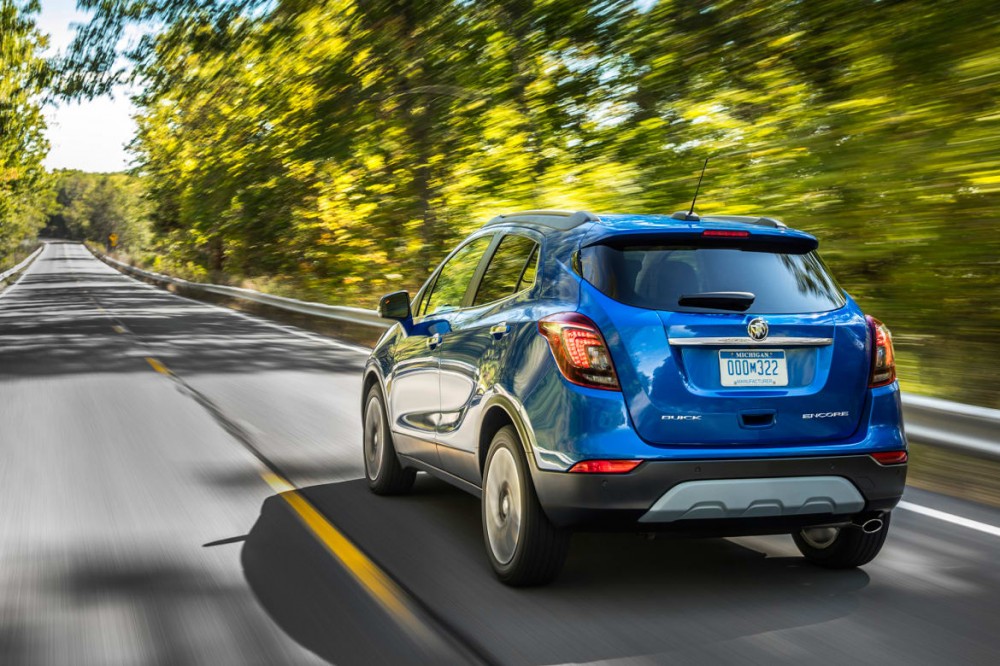
For kicks and giggles, I tried to configure a Chevrolet Trax with many of the same features found on my Encore test vehicle. The Trax comes only with the Encore's base engine, and top trims feature leatherette instead of genuine leather upholstery, plus a slightly smaller media screen, but it otherwise matches up almost evenly when it comes to features — for nearly $6,000 less than the Encore. The Trax (also with FWD) will run you $28,190 for a vehicle of the same size and many of the same features.
And therein lies the rub. The Encore isn't nice enough inside and has too many quirky annoyances to be considered a luxury vehicle (that missing armrest really bothers me), and its benefits can be replicated at lower prices thanks to an influx of small SUVs. The Encore needs to make its next evolution before it comes back out on stage again.








